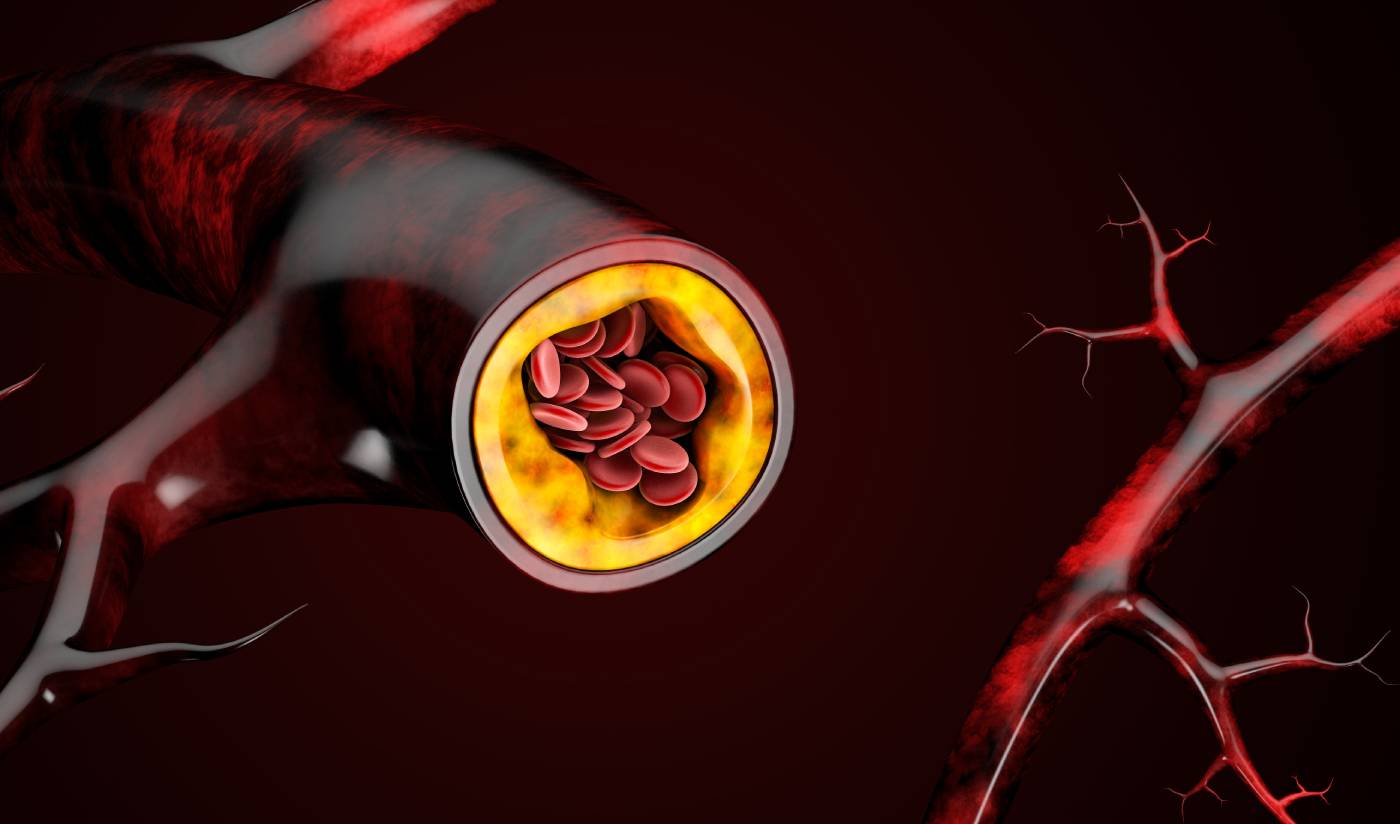While much of the attention surrounding cholesterol relates to its negative association with heart disease, the molecule plays a number of essential physiological roles in promoting the health of humans and a diverse array of life forms — even fossils nearly 600 years old have been found to contain this lipid.1
Cholesterol, a waxy, light-colored fat, is an essential component in cell membranes. Flexible, porous plasma membranes surround every cell in the human body, and cholesterol helps maintain the membranes’ structure.2 Furthermore, the chemical properties of cholesterol allow a diverse array of signaling proteins to associate with the cell membrane, allowing cells to communicate with each other. Therefore, cholesterol has implications for reproductive biology (through sperm activation), cancer (through oncogenic protein regulation), and numerous other fields.3 Cholesterol is needed to create steroid-based hormones, including testosterone and progesterone. Other hormones like aldosterone, key for kidney functioning, and cortisol, which activates the body’s stress response, also require cholesterol for their manufacturing. So too does vitamin D, which is present in few foods but is critical for the body’s ability to use calcium. Cholesterol also plays a notable role in the formation of bile acids, which help the body digest and absorb fats.4
Thus, cholesterol, cholesterol metabolites, and precursors of cholesterol are critical for routine and essential bodily functions,3 including other, less commonly cited roles. Cells in the lens of the human eye contain enormously high levels of cholesterol, and this cholesterol is immensely important: those with genetic disorders affecting the cholesterol synthesis pathway often have cataracts, and cholesterol-lowering drugs have been associated with cataract-like effects in animals. Many studies have shown that statins that block cholesterol synthesis also are associated with cataracts.5
Unlike other parts of the body, the eye lens is avascular — not connected to the bloodstream — and high concentrations of cholesterol are not abnormal.5 Excess cholesterol in the bloodstream, however, can lead to atherosclerosis, or the formation of plaques in the walls of blood vessels. This can weaken the blood vessels, cause the formation of blood clots, and result in heart disease, stroke, or damage to the kidneys and intestines.4 Still, the impact of cholesterol is not fully explained by its quantity; the way it is transported matters, too. There are five major transporter proteins (called lipoproteins, which allow the lipid-soluble cholesterol to flow through the water-soluble bloodstream). While low-density lipoprotein (LDL) particles deliver cholesterol to tissues and are rich in pure cholesterol, high-density lipoprotein (HDL) particles help remove cholesterol from circulation, returning it to the liver.2
It is becoming increasingly clear that a full lipid profile test is critical for assessing cardiovascular disease (CVD) risk. If the proportion of HDL to LDL cholesterol is high, risks of atherosclerosis may be lower, even if someone has high total cholesterol.4 This is just one example of the complex considerations surrounding cholesterol management. The impact of cholesterol on bone health is another example of this. While studies in animals and cell cultures suggest that the cholesterol-lowering effects of some statins benefit bone metabolism, this relationship remains unclear in humans. It is widely known that cholesterol influences hematopoietic stem cell proliferation, driving the production of blood cells (a crucial life process) but this can also potentially contribute to the development of atherothrombosis (the accumulation of lipids and other materials that can form a clot in the arterial wall).6
Cholesterol performs many critical roles in the human body; still, its confounding detrimental health impact means that much focus has been placed on limiting its dietary intake.2 Historically, nutrition guidelines for reducing CVD risk have included explicit limitations for dietary cholesterol. However, the American Heart Association and American College of Cardiology have more recently eliminated specific targets because of the complexity of the relationship between CVD risk and cholesterol.7 Roughly 80 percent of cholesterol is created by the human body itself,2 a fact that serves as testament to its importance.
References
- Davis J. Fat molecules preserved in a 558-million-year-old fossil help settle decades-old debate. National History Museum. Published 2018. https://www.nhm.ac.uk/discover/news/2018/september/fat-molecules-preserved-in-a-558-million-year-old-fossil-help-se.html
- Corliss J. How it’s made: Cholesterol production in your body. Harvard Health Publishing. Published 2019. https://www.health.harvard.edu/heart-health/how-its-made-cholesterol-production-in-your-body
- Tabas I. Cholesterol in health and disease. J Clin Invest. 2002;110(5):583-590.
- Mulryan C. The role of cholesterol. Independent Nurse. Published 2012. https://www.independentnurse.co.uk/clinical-article/the-role-of-cholesterol/63612/
- Widomska J, Subczynski WK. Why is very high cholesterol content beneficial for the eye lens but negative for other organs? Nutrients. 2019;11(5):1083.
- Yin W, Li Z, Zhang W. Modulation of bone and marrow niche by cholesterol. Nutrients. 2019;11(6):1394.
- Carson JAS, Lichtenstein AH, Anderson CAM, et al. Dietary cholesterol and cardiovascular risk: A science advisory from the American heart association. Circulation. 2020;141(3):e39-e53.
